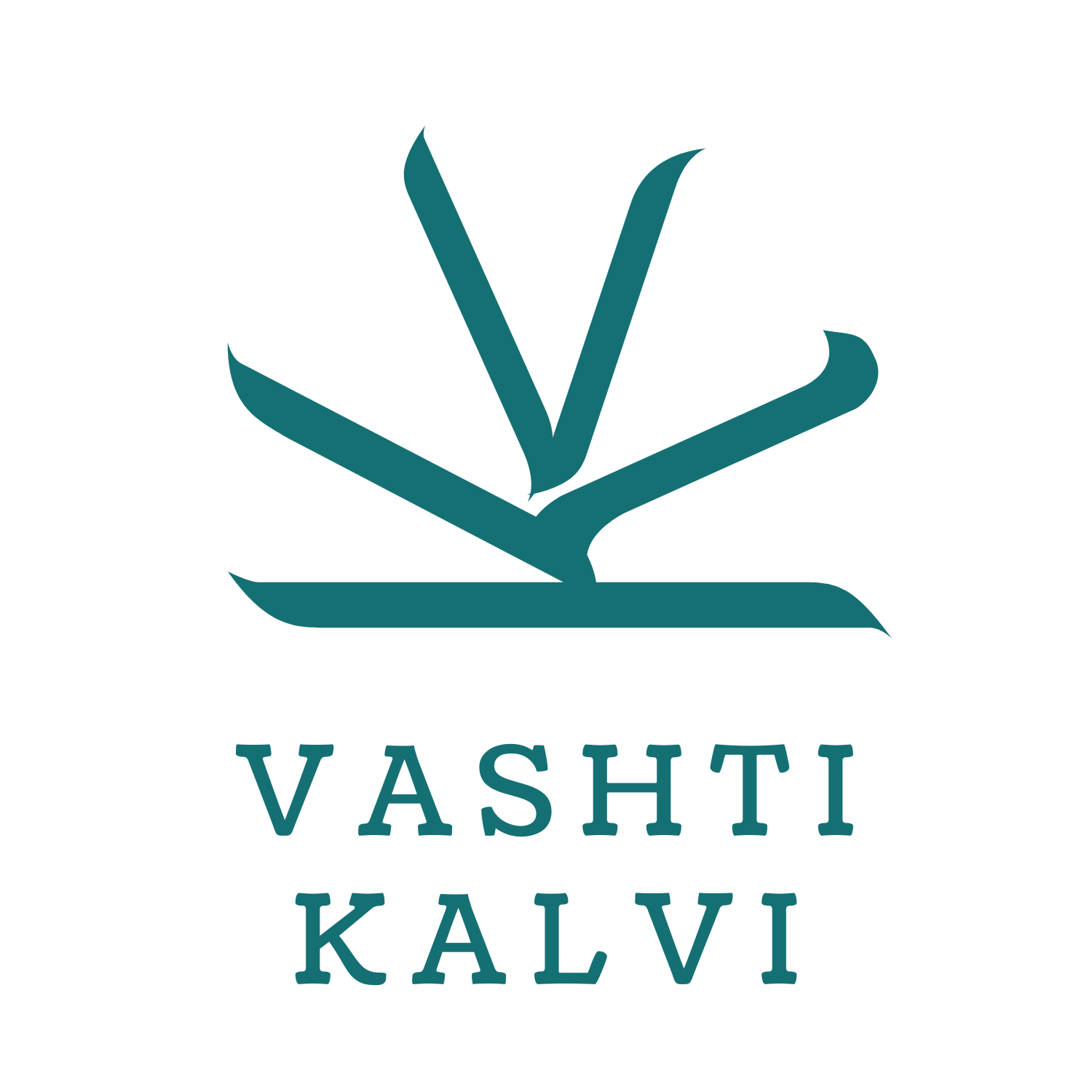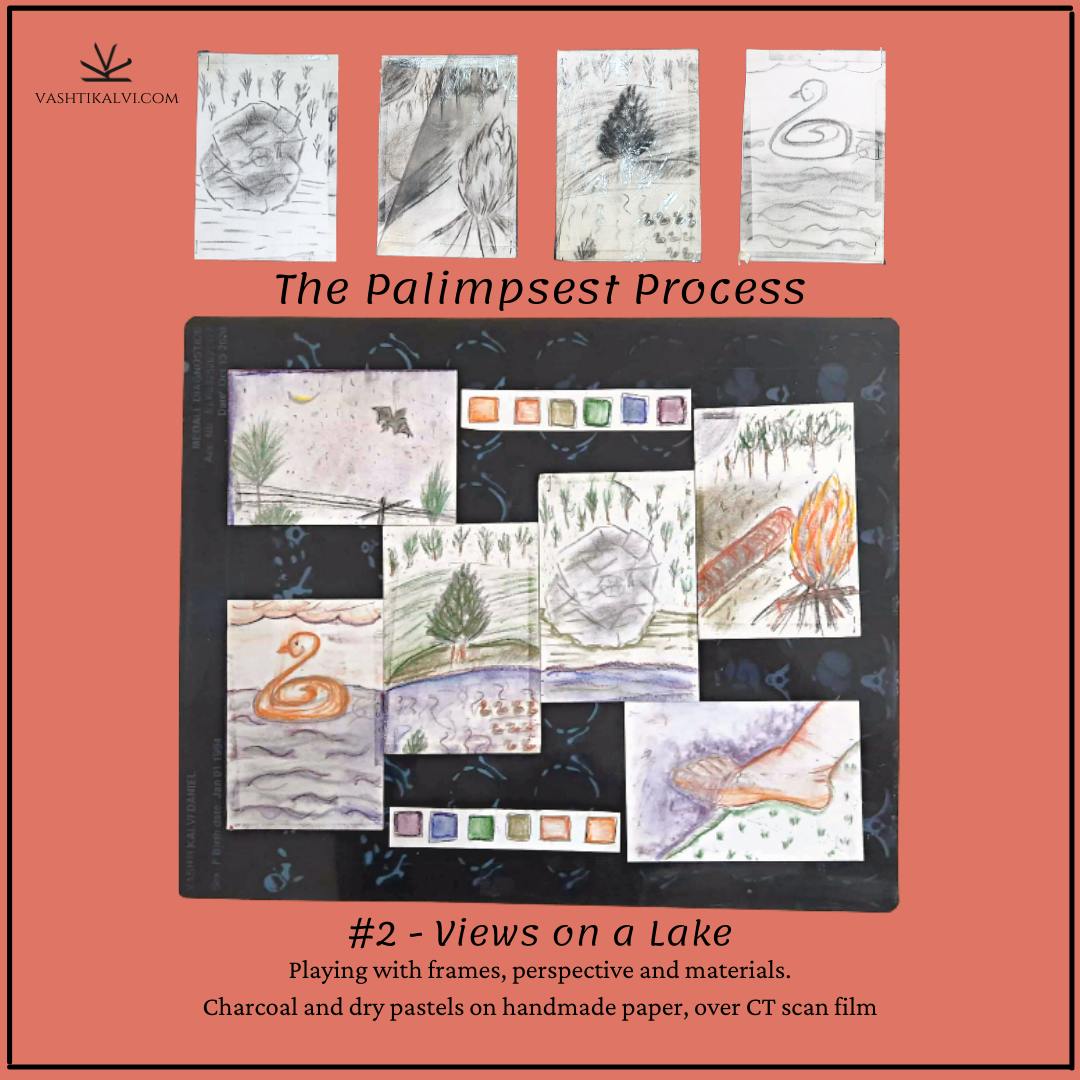This piece is a collage of six sketches, laid out on a sheet of CT scan film. Four of the sketches were done, in charcoal, nearly fourteen years ago. I was sitting at a bonfire on a lakeshore. The first sketch was of the bonfire with a log next to it. I then sketched a view of the lake, peppered with a flock of ducks, and the hill beyond it. The third sketch was a close up of a single duck on the lake, and the last was of a rock on the hill beyond the lake. In the last week, I did two more sketches - one of a foot stepping into the lake, and one of the skyline over the hill across the lake, with a bat.
With each of the figures, I was playing with how loosely I could convey its specific form. The foot took me forever to figure out, but I’m still pretty proud of the squashed treble clef shape that somehow effectively conveys “duck”. I used a grey dry pastel for the two new sketches, to mimic the charcoal, and then went over all six of them with colour. In adding the colour, I was trying to figure out ways to keep the sparsity of the image, the sense of transparency of even. My favourite part was the sky, for which I crushed specks of the two purples and the warm brown, and smashed the sprinkled powder into the paper with my palm.
Throughout the making of this piece, I’ve been thinking about perspective. I’ve been thinking about Robert Frost’s poems - how they so keenly observe the scene, without passing judgement. I wanted the piece to have a similar impact of conveying what a scene feels like, using only the briefest impressions of it. I’ve been thinking about the treachery of images and different lenses. I’ve been thinking a lot about the materials I use - the way they work with, or are incidental to the piece, and how circumstances shape artistic choices. And perhaps most consistently, I’ve been thinking about audiences, and the way the mere existence of an audience, however small, creates an entirely different standard for technical skill and aesthetic appeal.
When I did the first four sketches, I hadn’t had any art classes at the time. In the 9th grade, we could choose between visual art, music, and theatre. I begged and pleaded to be able to do all three, but they only let me take two. After years of craving more art in school, it was practically intoxicating to have such choices. I remember how difficult the decision was, even though it’s now laughably small. I have made art throughout my life. I’ve had access to art supplies, and tutorials. And I’ve had an exposure to the arts that has enriched my practice of art more than I can satisfactorily articulate.
I hadn’t heard of impressionism or cubism at the time, but I can’t look at the four initial sketches now without thinking of them. I was delighted to realise that a figure didn’t need to be exact, and was enjoying the liberty of conveying “duck” without actually drawing a duck. That sentiment remained when I was figuring out the bat. I remember experimenting with scale and perspectives. Each element of each sketch is, in essence, accurate. Yet, the final image is so far removed from what the sketches were based on, it’s unrecognisable. I tried to enhance that aspect of the piece by arranging the sketches so the connections holding them together were made evident, while emphasising the fragmented perspective of the whole image.
I wanted to add colour to the sketches without interfering with the fragility and vagueness of the larger image. Dry pastels felt like an organic progression from the charcoal I had used initially. I only recently discovered dry pastels and the charcoal sketches were the most I had done with any chalky/powdery medium. Technically, I probably didn’t do justice to the dry pastels as a medium. They’re ideal for layering and making rather richly pigmented paintings, but I loved the transparent quality of just one layer. Using the CT scan film as backing felt similarly preordained. It was the right size, colour, and texture, and worked with my thinking about transparency and perspective.
Unlike the previous palimpsest piece, I came at this with a lot more gratitude. It was easier to be tender, and have a sense of humour about how I was- maybe even be a little impressed. I am grateful for all the exposure I’ve had to art throughout my education - to poetry and art history. Regardless of how it translates to the art I create, it has made my experience of creativity so much richer. I’m proud of myself for having tried to play with perspective, even though I knew I’d make a mess of it. And even though it's exhausting to even remember being 14, I’m so glad that my instincts then somehow set me on the path towards a more thoughtful and imaginative approach to art.



